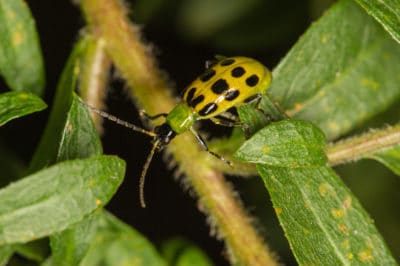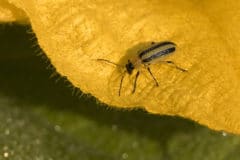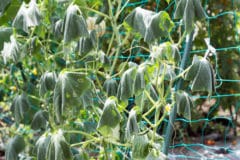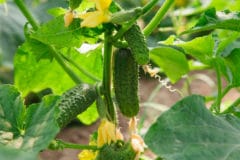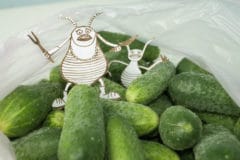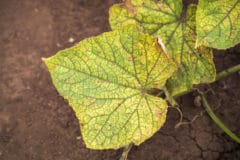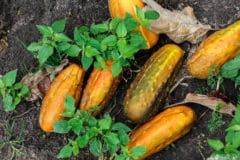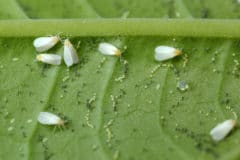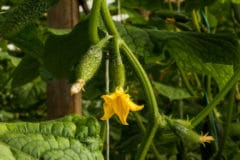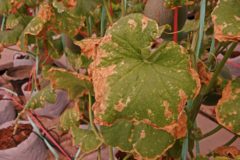Identifying the Beetles
Yellowish-green spotted cucumber beetles measure about ¼-inch long, with black heads, antennae and legs. Black thoraxes (where the wings and legs are attached), yellow abdomens and six black spots on each wing cover complete the look.
Their Life Cycle
Adult spotted cucumber beetles overwinter in on piles of trash, compost or garden debris. They emerge in spring to mate and deposit their orange-yellow eggs on a host of plants. If your cukes aren’t large to sustain them, the adult beetles survive on weeds. Their larvae head to the soil, devouring cuke roots and tunneling through stems until they pupate.
Their Feeding Damage
The adult beetles damage your cukes in several ways:
- They eat leaves, interfering with the plants’ ability to photosynthesize the food they need for growth.
- They eat the pollen male cuke flowers produce to fertilize the female flowers.
- They also eat the flowers, and every female flower they destroy means one fewer cucumber in your harvest.
- They transmit lethal bacterial wilt infection from plant to plant.
If enough spotted cucumber beetle larvae infest their developing root systems, your young cukes may not live long enough to produce leaves or flowers.
Preventing an Infestation
Because of risk of bacterial wilt disease, preventing a beetle attack is your best guarantee of a successful harvest.
Plant the Right Cukes
All cucumbers contain cucurbitacins, bitter compounds the beetles love. Your first line of defense against is to cucurbitacin-free varieties labeled burpless or non-bitter, like these:
- ‘Diva,’ a burpless vining cuke great for slicing
- ‘Muncher,’ a burpless vining variety. Harvest the fruits at 2 to 3 inches for pickling, or at 7 to 9 inches for slicing.
- ‘Suyo Long,’ a vining variety with thin, burpless fruits up to 16 inches long. They’re great in salads or as bread-and-butter pickles.
Use Row Covers
Once you’ve planted your seeds, protect them from the beetles with permeable, lightweight fabric row covers. Draped over the cuke bed at planting, they let sunlight, moisture and air in. Secure their edges with soil or garden fabric pins, allowing enough slack in the middle that the seedlings can lift them as they grow.
Keep Your Garden Clean
To keep adult beetles from attacking, eliminate their winter hiding places. Clean your garden in fall by removing all plant debris and trash. Starting in early spring, keep the cuke patch free of weeds so the bugs can’t use them as food or egg incubators while waiting for your cukes to grow.
